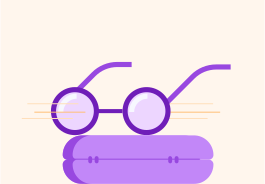YOU ARE LEARNING:
Vision Defects

Vision Defects
The two main vision defects - myopia (short sightedness) and hyperopia (long sightedness), can be managed with the use of corrective lenses.
What is the function of the eye?

People can be long- or short-sighted and they might need corrective lenses or treatment. What do you think the problem is?

Two common defects of the eyes are myopia (short sightedness) and hyperopia (long sightedness). This is where rays of light do not focus on the retina. One treatment is wearing spectacle lenses which refract the light rays so that they do focus on the retina.
Convex lenses are worn to correct long sightedness.
They refract light to help the eye focus light on the retina.

Does a convex lens curve "inwards" or "outwards"?


Convex lenses...
A) refract the rays to become closer. B) refract the rays to spread out.


Concave lenses are worn to correct short sightedness.
They refract light to help the eye focus light on the retina.

Does a concave lens curve "inwards" or "outwards"?


Concave lenses...
A) refract the rays to become closer. B) refract the rays to spread out.


Select all of the possible ways of treating long and short sightedness.

You can select multiple answers
What piece of equipment for correcting a vision defect does this describe? Small, sits directly on the cornea.

If a patient decides to correct their vision defect by having the shape of their cornea surgically changed, what piece of equipment is used to do this?

There is only one piece of the eye that we can replace with an artificial piece to correct a vision defect. Which one?

